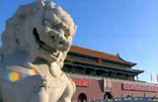Careful calculations lie behind dazzling prices
Updated: 2015-05-05 13:42
By ZHENG YANGPENG(China Daily)
|
|||||||||||
Domestic developers study potential purchases before putting money down
It is easy to get the idea that the Chinese companies rushing to the United Kingdom, United States and Australia to snap up properties with price tags that grab headlines are nouveau riche.
In February, Dalian Wanda Group Co Ltd raised eyebrows in Australia by purchasing Gold Fields House, an office building overlooking the landmark Sydney Harbour Bridge and the Sydney Opera House, for A$415 million ($327 million).
But professionals were less surprised. Darren Xia, head of the international capital group of global real estate service firm Jones Lang LaSalle China, said that Chinese buyers, notorious for being stingy, watched every cent they spent-or at least his clients did.
"They typically worked with us for one or two years before sealing a deal. They are not like the Japanese, who spent lavishly on overseas properties in the late 1980s," he said.
Xia dismissed media reports claiming that office buildings or hotels were acquired at unreasonably high prices, based on calculations per square meter.
"You have to look at the specific features of the office building. In some cases, the price seemed high, but considering that leases will expire and the offices can be rented out again at higher rates, the yield will rally. Then, the price is justified," he said,
In Sydney, where rent yields of A-grade office buildings range from 6 percent to 6.5 percent, one can use such a building as collateral to get a bank loan at a rate of 4 percent to 4.5 percent, he said-a good return for investors.
Chinese investors also carefully examine the lease portfolio in an office building. The duration of the leases, for example, and who the tenants are all affect the potential return.
Aside from these issues, macroeconomic conditions, notably exchange and interest rates, also play a critical role. Last November and December saw a flurry of big deals in Australia: four deals concluded by Xia's team in the fourth quarter took up 87 percent of the year's whole transaction.
Behind the buying spree, according to Xia, was that the Australian dollar's value against the yuan sank from about 5.85 in June to 5 in December. It had dipped again to 4.83 as of April 24. The interest rate was also low after a rate cut in early February.
Last year, Europe remained the top investment destination for Chinese capital, while Australia surpassed the US to become the second most popular destination, drawing capital of $3 billion.
For Chinese developers, the problem now is there is no available land in Sydney that will meet their requirements.
"Developers want a site of more than 100,000 square meters on which they can develop mixed projects with residential and commercial space. But the land available usually has a gross floor area of 20,000 square meters.
"Currently, we see lots of developers purchasing a small site downtown, demolishing the old office building on it and putting up a residential project," Xia said.
A prominent feature that marks the growing sophistication of Chinese developers is that they are increasingly "localized", Xia said. After a deal in Australia, they usually set up a local company and recruit local staff to scout for further opportunities. They are also more likely to team up with local realtors.
Chinese developers should recognize their unique advantages in the overseas market, including familiarity with Chinese buyers (or Asian buyers at large), low funding costs and fast execution capability, according to Xia. They should also learn from mature local developers about how to differentiate their products and identify niche markets.
Related Stories
Robust property sales over holiday 2015-05-05 07:23
Kunming holds events to mark World Intellectual Property Day 2015-04-29 16:24
China property loans increase 2015-04-25 11:13
Kunming holds events to mark World Intellectual Property Day 2015-04-22 17:18
Intellectual property week gets underway 2015-04-22 08:37
Property register to come under one roof 2015-04-21 07:49
Today's Top News
Xi meets visiting KMT chairman
Siemens healthcare unit probed by China regulator for bribery
UK urged to ease up on visa curbs
Chinese president to visit Russia, Kazakstan, Belarus,attend WWII celebration in Moscow
Two dead in Greek prison inmates' clashes
Protest against police violence expands to NYC
Official: Election outcome won't change Britain's policy on China
Milan tightens security ahead of Expo opening
Hot Topics
Lunar probe , China growth forecasts, Emission rules get tougher, China seen through 'colored lens', International board,
Editor's Picks

|

|

|

|

|

|






